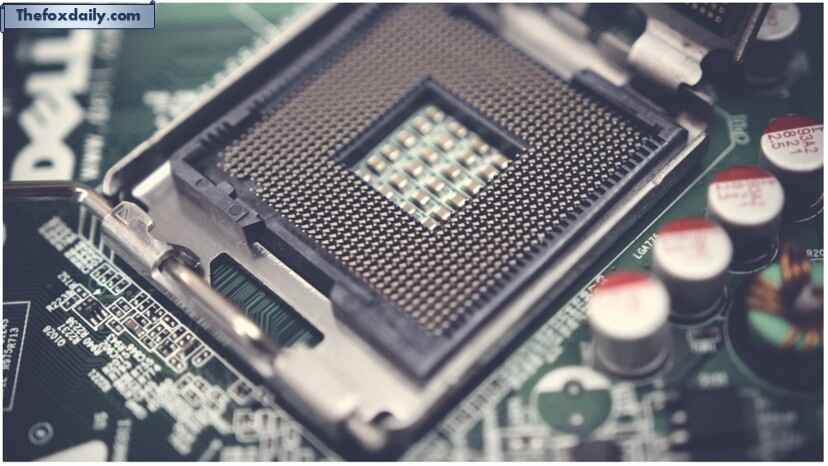
Union IT Minister Ashwini Vaishnaw presented India’s first fully indigenous microprocessor — a type of Semiconductor chip — to Prime Minister Narendra Modi at Semicon India 2025 on September 2. The Indian Space Research Organization’s (ISRO) semiconductor lab created the chip, which is known as the Vikram 3201.
“We met for the first time just a few years ago to make a new beginning driven by our Prime Minister’s farsighted vision, and we launched the India Semiconductor mission [in 2021],” Vaishnaw remarked at the ceremony. In just three and a half years, the globe is already confidently observing India. Five semiconductor units are currently being built at a breakneck rate. We just presented the first “Made-in-India” chip to PM Modi.”
The fundamental units of contemporary computing are semiconductor chips. These small chips power everything from cellphones to the massive data centers that power the Internet, from electric automobiles to cruise missiles, from high-end luxury goods to supercomputers that can predict the weather.
However, what are semiconductor chips exactly? How are they related to computers? How are they manufactured? We take a look.
What are semiconductors?
Semiconductors are unique, in that most materials are either conductors — which let electric current flow — or insulators — which block electricity. For instance, a copper wire is a conductor, while glass is an insulator.
But semiconductors are not like that. Although in their natural state, semiconductors are a weak conductor of electricity, when certain materials are added to them and an electric field is applied, current can start to flow. For instance, adding phosphorus to semiconducting materials like silicon and germanium permits a negative current to flow.
Why do semiconductors play such a crucial role in electronics?
Following the development of transistors in the late 1940s, which now power all contemporary electronics, semiconductor materials became essential. This is due to the fact that they were among the first electronic parts constructed with a semiconductor.
American physicists Walter Brattain and John Bardeen created the first transistor, which was made out of gold foil strips on a triangle of plastic that were pressed down to make contact with a germanium slab.
According to a 2023 report released by Stanford University in the United States, “all information in a computer is transmitted or stored in forms of binary digits – zeros and ones – and these zeros and ones are ‘voltages’ that are generated, transmitted and stored using little switches made out of transistors.”
The similar function was served by vacuum tubes, which are lightbulb-like metal filaments enclosed in glass, prior to transistors. But there were a number of problems with them. For example, because they shined like lightbulbs, they would draw insects and need to be “debugged” on a regular basis. Frequently, they would also burn out, which would stop the system as a whole. Vacuum tubes were also quite big in size — ENIAC, a highly sophisticated computer built in 1945, had some 18,000 of these tubes, with each one being the size of a fist.
Transistors swiftly supplanted vacuum tubes because they were much more compact and efficient. However, employing transistors presented a different challenge in the early years. There could be thousands of transistors in a single system, and the wire needed to link them all produced a complex jungle.
When American electrical engineer Jack Kilby created the “integrated circuit” in 1958, this problem was solved.
“Rather than use a separate piece of silicon or germanium to build each transistor, he thought of assembling multiple components on the same piece of semiconductor material… Multiple transistors could be built into a single slab of silicon or germanium. Kilby called his invention an “integrated circuit,” but it became known colloquially as a “chip,” because each integrated circuit was made from a piece of silicon “chipped” off a circular silicon wafer,” economic historian Chris Miller wrote in his book, Chip War: The Fight for the World’s Most Critical Technology (2022).
Robert Noyce, a California-based engineer, independently developed the concept of creating an integrated circuit six months after Kilby’s discovery. He soon joined Intel since his chip was more suitable for mass production.
In 1971, the company launched a chip called the 4004 and described it as the world’s first microprocessor — “a micro-programmable computer on a chip”. Since then, semiconductor materials have played a crucial role in the computing industry, which was revolutionized by this.
Transistors, diodes, capacitors, resistors, and the numerous connections between them are placed on a silicon wafer sheet to form modern integrated circuits, commonly referred to as semiconductor chips.
What is the manufacturing process for semiconductor chips?
The tiny chips are made in highly specialised manufacturing facilities (known as foundries) through a rigorous process called wafer fabrication, or wafer fab. The process begins with the slicing of semiconducting material, such as silicon, into a thin segment.
According to an IBM report, when the wafer is made, it is ground and polished by a number of distinct, extremely specialized machines, and an integrated circuit is then placed on its surface.
It should be noted that the fabrication calls for clean rooms that are intended to preserve sterility in order to guard against airborne infection. The total manufacturing process for semiconductor chips may consist of 500–1,500 steps.
For breaking news and live news updates, like us on Facebook or follow us on Twitter and Instagram. Read more on Latest India on thefoxdaily.com.





COMMENTS 0